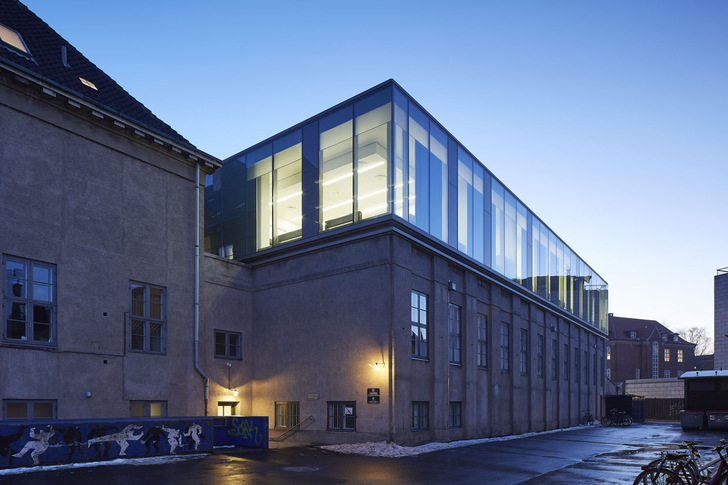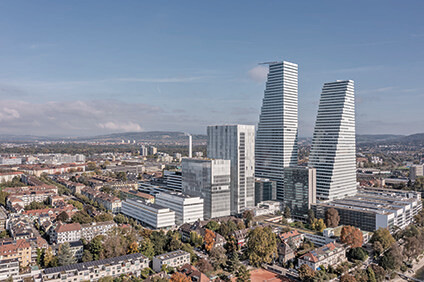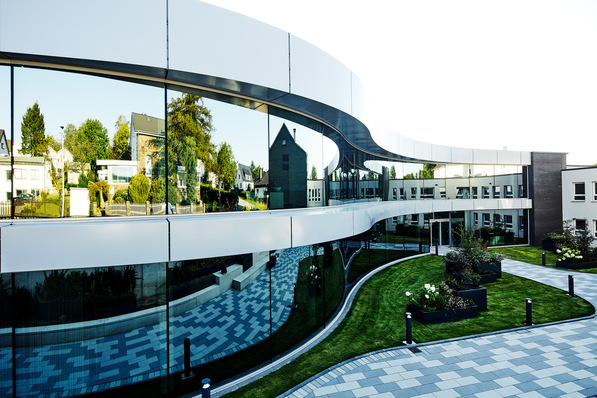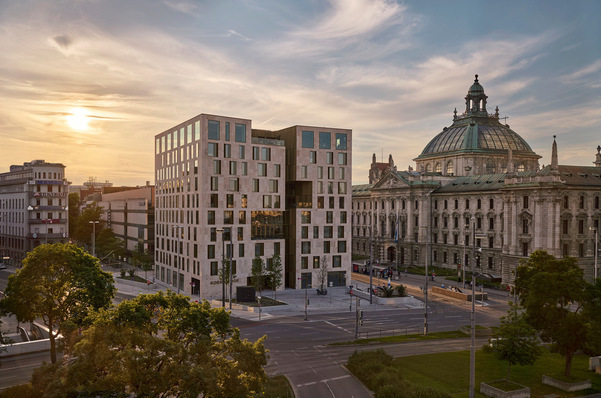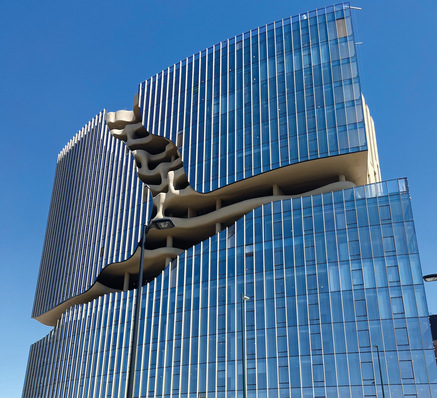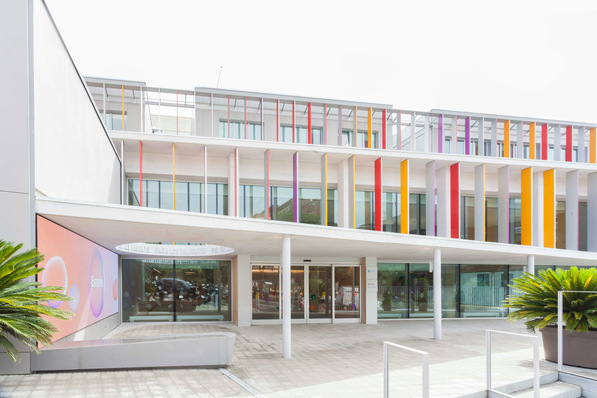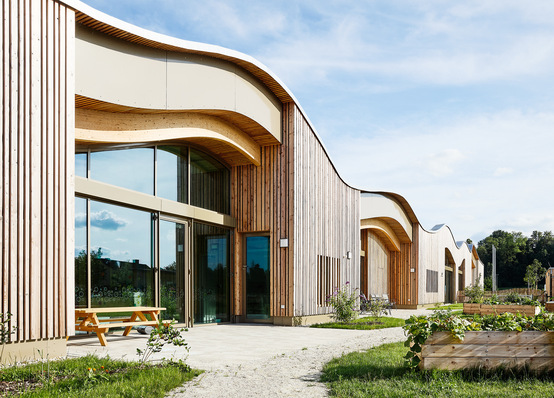The extension to the ensemble of Copenhagen University was more or less a pilot project for Okalux. For the first time, so-called Multifunctional Modules (MFM) could be used for an entire building shell. The new system makes it possible to combine and embed different Okalux products in one single façade element – without additional bars; allowing the building shell to be perfectly customised to the demands on design and energy.
Improved research conditions
Copenhagen University is spread over several locations within the city. The Nørre Campus is, as the name implies, located in the northern part of the metropolis and has been further developed and expanded to an international “Science City”. Individual new constructions are incorporated as catalysts, with the focus on concentration and efficient restructuring. The plan was to enhance the quality of the Institute for Sports Sciences and Nutrition with a new construction along these lines.
Discreet presence
Space for the expansion was found on an existing, three-winged building complex designed by Carl Brummer in the early 1920s. The complex had been expanded several times. In the late 1930s, Edvard Thomsen filled the space between the two side wings with an indoor swimming pool – a showpiece of early Scandinavian functionality to this day. A dance hall with a large zinc hipped roof was added to the south side in 1996. A further addition was planned to restore the symmetry of the entire complex and add urgently needed space. Since the end of 2016, the northern side wing has been complemented by a one-storey addition, designed by Mikkelsen Arkitekter. The new construction is clearly separated from the neoclassical brick facade of the existing building by a clear joint. Its material and cubic form, however, pay tribute to the homogeneity of the existing style of the facade. The additional storey complements the complex with straightforward elegance, and, in an abstract way, the cornice and attic floor give the facade structure a new interpretation.
See also this article:
Vilnius University Library: Cosy on the inside with views of the pines
The simple, rectangular design allows for an optimal arrangement of functional spaces in an area of approximately 400 square meters. The work places are directed towards the north, east and west, where the façade is more open and transparent. The adjacent and access areas are located towards the south, behind more closed and well insulated facade elements.
Individually Customized Façade Elements
It was particularly important to the architects to enable an abundance of glare-free daylight to enter the offices, laboratory and research facilities in order to achieve a comfortable working atmosphere in the interior rooms. The rooms in which people stayed for longer durations should also have an unlimited view to the street in the public space. These specifications require a transparent facade without closed parapet areas. The climatic conditions in northern Europe, however, necessitate a shell with very good heat insulation.
On their search for a facade system in which the transparency, U-value and incidental daylight could be adjusted to meet the demands of the planner and user precisely, Mikkelsen Arkitekter found their ideal partner company in Okalux. The company is renowned for its ability to collaborate with architects to develop solutions that are perfect for each project.
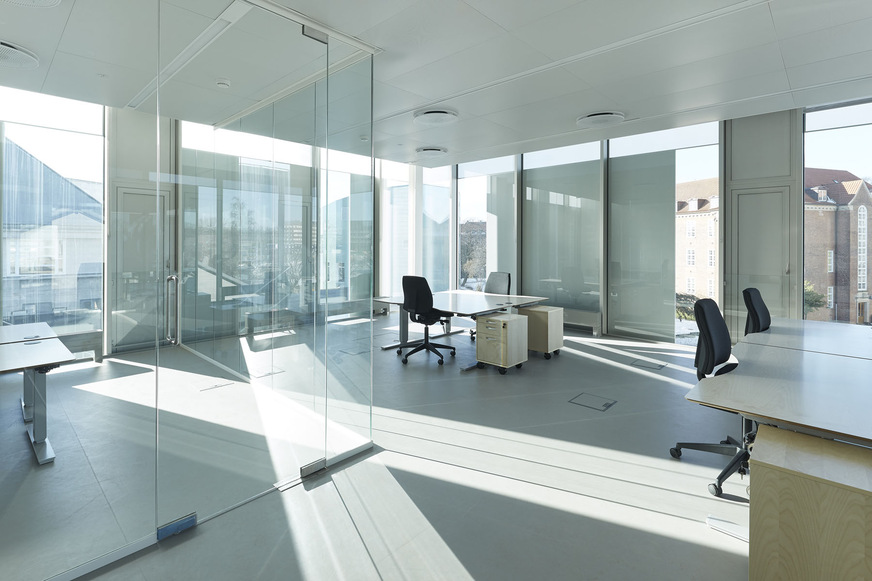
Søren Aagaard
Modular Design
The MFMs are perfect for the entire building shell of the extension. What makes this system solution so special is that you can choose which inserts will be inserted into any specific façade element. Okatech HPI inserts with expanded aluminum metal and Kapilux T inserts were combined without an additional bar in the area of the facade in which their specific effect was desired: the Kapilux inserts in the skylight area in order to diffuse daylight deeply into the interior, the Okatech HPI inserts in the areas in which shading was required. The architects specified three element types with different configurations to accommodate the specific situations and requirements of the interior with custom-fit solutions.
This may also be interesting for you:
Balancing daylight access with solar shading
The glass facade achieves good heat insulating values similar to those of massive walling. The HPI inserts achieve Ug-values of 0.3 W/m²K, the capillary inserts 0.7 W/m²K and the transparent areas values of 0.8 W/m²K. Another advantage is the significantly narrower build-up of the multifunctional modules which adds space to the interior side.
The multifunctional modules used on the complete facade are more than highly functional. Stig Mikkelsen especially appreciates that they correspond exactly to his aesthetic concepts and communicate the underlying idea of the design.







